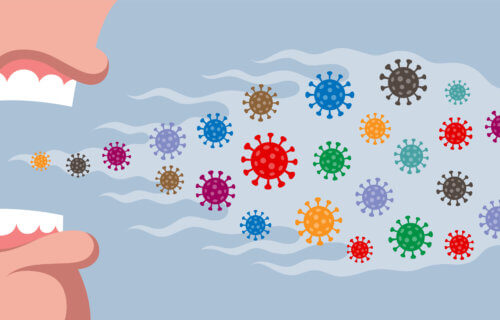CHAPEL HILL, N.C. — Researchers from the University of North Carolina are showcasing just how quickly COVID-19 can spread from person to person under one roof. Additionally, the study is providing some much-needed information as to how and why communities of color have suffered more than other demographics throughout the pandemic.
Researchers tracked 100 COVID-positive individuals living in the local Raleigh area between April and October 2020. Those participants lived with an additional 208 housemates.
Aside from 73 of those housemates testing positive by the time researchers arrived, the team gave PCR tests to all housemates on a weekly basis for three weeks following their housemate testing positive for COVID-19. Ultimately, researchers concluded the secondary attack rate among housemates was 32 percent.
“We think this number is actually much higher,” says senior study author Jessica Lin, MD, assistant professor in the UNC Department of Medicine, Division of Infectious Diseases at the UNC School of Medicine, in a university release. “Sometimes we were getting to households to test people four or five days after the initial COVID-positive person showed symptoms. By that time a lot of household members were already infected. But because that infection happened before we got there, we couldn’t include it in our data.”
This work took place long before the even-more-contagious Delta variant emerged. With this in mind, study authors hypothesize current rates of infection among housemates is quite higher right now.
Viral loads determine infection speed
Most secondary housemate infections occurred quickly, taking place within the first week of the initial positive COVID-19 test. Moreover, such cases shared a similar nasopharyngeal viral load, which refers to just how much of the virus an infected individual carries in their nose and throat.
“This means the viral load of the index case matters,” Prof. Lin adds. “A higher viral load means it’s more likely that there will be secondary transmission in a household, and viral load is also an indication of how sick a person could get from the virus.”
Researchers also investigated how much living density, or the amount of people living within a given household, played into infection rates. Well, 44 percent of examined participants were Hispanic or non-white, and researchers discovered that minority households tend to have greater living density and thus a higher risk of secondary infection.
“It’s very difficult to follow public health guidelines in some living situations,” Prof. Lin notes. “If you have multiple people and generations sharing common areas or bedrooms, or say you are a single parent, it becomes nearly impossible to isolate or even physical distance.”
All in all, study authors conclude their work points to one overarching message: people need to get the COVID-19 vaccine. The more people living under one roof that are vaccinated, the less of a chance for more infections.
“Household transmission really is the main place where most people are getting COVID,” Prof. Lin concludes. “It’s spreading from their family and friends, people that are in their bubble and they feel safe with. When you get vaccinated, you aren’t just protecting yourself, you’re protecting those important people around you.”
The study appears in the journal Clinical Infectious Diseases.
